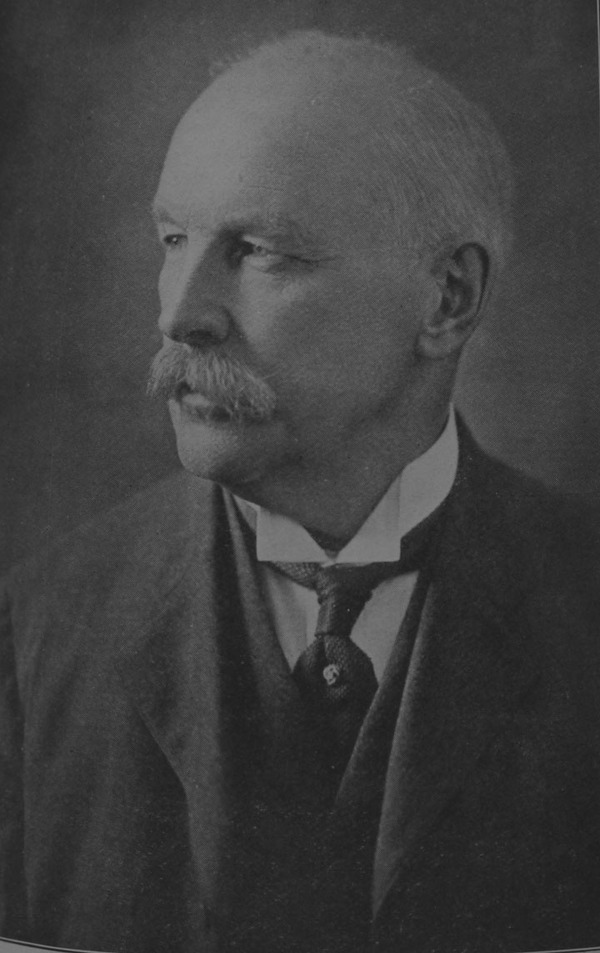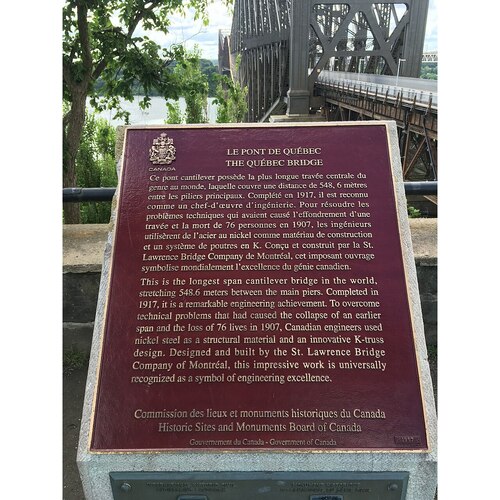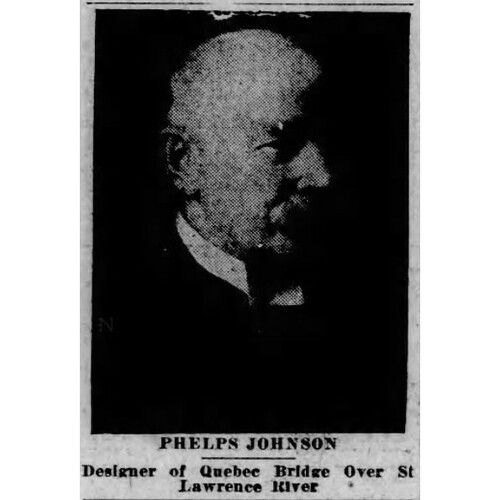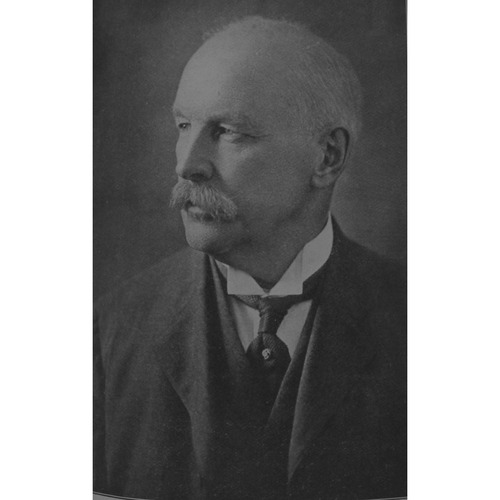
Source: Link
JOHNSON, PHELPS, engineer; b. 23 Oct. 1849 in Warwick, N.Y., son of William H. Johnson and Eliza Phelps; d. unmarried 20 Feb. 1926 in Montreal.
Educated in public schools in Springfield, Mass., and at Goldthwaites Academy, a private school in Longmeadow, Phelps Johnson began his engineering career in March 1867 with the R. F. Hawkins Iron Works in Springfield. He started as a draftsman and later he became an assistant engineer. From 1879 to 1881 he was an assistant engineer with the Wrought Iron Bridge Company of Canton, Ohio. The firm’s vice-president, Job Abbott*, left in 1880 to become president and chief engineer of the Toronto Bridge Company and in February 1882 Johnson joined the Toronto firm. That same year Abbott, Johnson, and others obtained a federal charter to establish the Dominion Bridge Company Limited, a firm with much wider powers than Toronto Bridge. In May 1883, after Dominion Bridge had purchased Toronto Bridge, Johnson was appointed manager and engineer of the Toronto works. When the Toronto operations closed five years later, Johnson moved to the company’s main office near Lachine, Que., as chief engineer. While Dominion Bridge developed into the largest steel construction firm in Canada, he held the posts of general manager (1892–1904), director (1903–26), general manager and chief engineer (1904–19), managing director (1910–13), and president (1913–19). After his retirement in January 1919, he remained a member of the firm’s executive committee until his death.
During his tenure with Dominion Bridge, Johnson presided over the construction of many important structures, such as, in 1886, the Lachine Bridge which crossed the St Lawrence River for the Canadian Pacific Railway and, in 1915, a cantilever bridge over the Reversing Falls in Saint John. He was consulted frequently on engineering problems, especially those relating to the design and construction of bridges.
Johnson’s greatest achievement was the rebuilding of the Quebec Bridge. The first attempt to span the St Lawrence near Quebec City, to permit the crossing of the main line of the National Transcontinental Railway, had ended tragically on 29 Aug. 1907. The bridge, nearly completed by the Phoenix Bridge Company of Phoenixville, Pa, for the Quebec Bridge and Railway Company [see Simon-Napoléon Parent*], collapsed, killing 75 of the 85 men working on the structure. It was one of the world’s most spectacular engineering disasters. A royal commission, established two days later, blamed the accident on faulty design and inadequate supervision. The federal government nationalized the project and appointed a board of engineers to oversee the rebuilding. After extensive consultations with experts, including Johnson, the board produced a new set of specifications.
The St Lawrence Bridge Company, a partnership between Dominion Bridge and the Canadian Bridge Company, was formed in 1911 with Johnson at its head, to pool the resources of the two firms and to keep the project Canadian. On 4 April 1911 St Lawrence Bridge was awarded the contract, based on one of several designs by Johnson which the firm had submitted. With its heavy 1,800-foot span, the new bridge presented unprecedented engineering problems, which he solved with an innovative K-truss bracing system. Working under Johnson’s direction, chief engineer George Herrick Duggan built the structure, but not without serious mishap. On 11 Sept. 1916, as the 640-foot, 5,000-ton centre span was being hoisted into place, a hydraulic jack slipped and the span fell into the river, killing 13 men. A new piece was made and was secured in place the following year. Fully completed on 21 Aug. 1918, the bridge, the largest in Canada and the longest cantilever span in the world, was officially opened on 22 Aug. 1919 by the Prince of Wales. According to the Canadian Engineer, it was “the most remarkable steel structure ever built.” The entire enterprise cost approximately $35,000,000.
Johnson was not only a leading engineer, he was also a leader of his profession. Elected a member of the American Society of Civil Engineers in 1891 and of the Canadian Society of Civil Engineers in 1893, he served as one of the Canadian society’s councillors from 1904 to 1906 and from 1910 to 1912, as vice-president in 1907, and as president in 1913. In his presidential address of 1914, he explained that the status of engineers could best be improved by raising the standards of their practice through the exchange of professional knowledge. He staunchly opposed the use of collective action to coerce employers or to restrict competitions to Canadian engineers, actions which he thought would bring the profession into public disrepute.
Although a member of the St James, Engineers’, and Royal St Lawrence Yacht clubs – some of Montreal’s most important English-speaking clubs – Johnson, a bachelor, participated little in Montreal’s active social life, dedicating himself instead to his business and professional interests. In recognition of his achievements, particularly his role in building the Quebec Bridge, McGill University conferred an honorary lld on him in 1921.
For more than a quarter century, Phelps Johnson occupied an important position in business and engineering. As a management engineer, he helped to make the Dominion Bridge Company profitable; at the same time, he directed the construction of crucial rail and highway bridges that bound Canada together. He was honoured throughout North America for his original solutions to difficult steel construction problems. When he died, the Engineering News-Record of New York praised him as “the most widely known and respected engineer in the Dominion.”
Although he was an important figure in Canadian engineering history, there is comparatively little source material on Phelps Johnson. His application for membership in the Canadian Soc. of Civil Engineers is missing from the papers of the Engineering Institute of Canada (Montreal). Johnson’s presidential address to the Canadian Soc. of Civil Engineers appears in its Trans. (Montreal), 28 (1914): 102-6.
American Soc. of Civil Engineers, Trans. (New York), 90 (1927): 1176-78. Canadian men and women of the time (Morgan; 1912). Canadian Railway and Marine World (Toronto), October 1917: 400-2; March 1926: 135. G. H. Duggan, The Quebec Bridge: notes on the work of the St. Lawrence Bridge Company, in preparing the accepted design for the construction of the superstructure ([Quebec?, 1918?]). Engineering Journal (Montreal), 9 (1926): 168; 20 (1937): 288. Engineering News-Record (New York), 96 (January-June 1926): 376-77. J. W. Leonard, Who’s who in engineering: a biographical dictionary of contemporaries, 1925 (2nd ed., 2v., New York, 1925). W. D. Middleton, The bridge at Québec (Bloomington, Ind., 2001). J. R. Millard, The master spirit of the age: Canadian engineers and the politics of professionalism, 1887-1922 (Toronto, 1988). “The Quebec Bridge,” Canadian Engineer (Toronto), 33 (July-December 1917): 264-66. The Quebec Bridge over the St. Lawrence River near the city of Quebec on the line of the Canadian National Railways: report of the government board of engineers (2v., Ottawa, 1919). C. R. Young, “Bridge building,” Engineering Journal, 20: 486.
Cite This Article
J. Rodney Millard, “JOHNSON, PHELPS,” in Dictionary of Canadian Biography, vol. 15, University of Toronto/Université Laval, 2003–, accessed January 18, 2026, https://www.biographi.ca/en/bio/johnson_phelps_15E.html.
The citation above shows the format for footnotes and endnotes according to the Chicago manual of style (16th edition). Information to be used in other citation formats:
| Permalink: | https://www.biographi.ca/en/bio/johnson_phelps_15E.html |
| Author of Article: | J. Rodney Millard |
| Title of Article: | JOHNSON, PHELPS |
| Publication Name: | Dictionary of Canadian Biography, vol. 15 |
| Publisher: | University of Toronto/Université Laval |
| Year of publication: | 2005 |
| Year of revision: | 2005 |
| Access Date: | January 18, 2026 |





